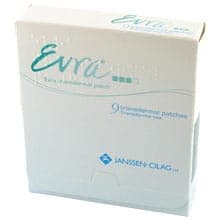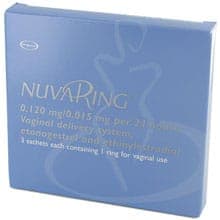Login to your account
- Prescription included
- Genuine medication
- All-inclusive service - No hidden fees
- Free next-day delivery
Alternatives to the contraceptive pill
Other methods of hormonal contraception
As many as 150 million women take the contraceptive pill globally, making it the fourth most popular method of birth control.
However, for it to work you have to remember to take your pill every day. This applies to both the combined pill and the mini pill.
For many women, remembering to take this daily pill can be a struggle. It can cause worry and stress if you know that you’re forgetful.
Several hormonal options can ensure protection for up to weeks, months or even years. You can also choose to rely on non-hormonal options. Keep reading to learn about the alternatives to the contraceptive pill.
Available Conditions

- Just as effective as 'the pill'
- Used for three weeks (one patch per week) followed by a 1 week break
- Can help regulate periods and reduce period pain

- Over 99% effective
- Convenient once-a-month insertion
- Comfortable and unobtrusive
What are the different types of contraception?
There are two main types of contraception, hormonal and non-hormonal.
Hormonal contraception prevents pregnancy by changing the way your natural hormones work. There are two main types:
- combined contraceptives, containing synthetic versions of oestrogen and progesterone (e.g. the combined pill)
- progesterone-only contraceptives (e.g the mini pill)
Non-hormonal contraceptives include things like condoms as well as tracking your cycle and avoiding intercourse when you’re most fertile. These methods don’t have any impact on your natural hormones but can be less reliable.
Hormonal contraceptives
Several different types of birth control contain hormones, such as:
- the combined pill
- the mini pill
- the contraceptive patch
- the contraceptive ring
There are also hormonal contraceptives known as LARCs (long-acting reversible contraceptives). These include:
- the intrauterine system (IUS)
- the contraceptive injection
- the contraceptive implant

LARCs protect you for longer periods compared to the pill, patch or ring. They can offer protection for multiple months or years.
Non-hormonal contraceptives
Methods of non-hormonal birth control include:
- condoms - both external (male) and internal (female)
- cervical caps
- diaphragms
- spermicides (cream, gel or foam)
These are sometimes referred to as barrier methods because they create a barrier between the semen and the cervix. This means that sperm cannot enter the woman’s uterus.
Another form of non-hormonal contraception involves tracking your menstrual cycle. By avoiding intercourse on days that you’re ovulating, you can naturally prevent pregnancy without using barrier methods.
Why opt for an alternative to the pill?
While all types of contraceptive pills are 99.9% effective when used correctly, they can be easy to forget - which can make your sex life more stressful than it needs to be.
For some women, an alternative to the pill may be a good idea if:
- you find it stressful having to remember to bring your medication on overnight trips or holidays
- you don’t want to take pills every day, or you find it difficult to take them correctly
- taking oral tablets affects your stomach
- you’ve been on the pill for a while and want to try a different form of contraception
- you’re planning to stay on birth control long-term and want to commit to a longer-lasting form of contraception
Luckily, there are many available alternatives to choose from if you don’t want to be on the pill.
What are some hormonal contraception alternatives?
The following list will explain all of the existing hormonal contraception alternatives to the pill.
The ring
The contraceptive ring, commonly known under the brand name NuvaRing, is inserted into the vagina once every 3 weeks.
After 3 weeks it is removed for one further week. This allows for a withdrawal bleed.
| Pros | Cons |
|---|---|
|
|
It contains synthetic (man-made) versions of oestrogen and progesterone. Because of this, it prevents pregnancy in the same way as the combined pill. It also offers the same benefits (a lighter period, less cramps, a regular cycle).
When used correctly, the contraceptive ring is 99.7% effective at preventing pregnancy.
Want to try the contraceptive ring?
Click hereThe patch
The contraceptive patch (also known as the Evra patch) also works in the same way as the combined pill. However, instead of taking the hormones orally, your body absorbs them through a patch.
| Pros | Cons |
|---|---|
|
|
The patch is placed onto clean, dry skin at the start of each week. You do this for 3 consecutive weeks before wearing no patch for one more week. During this time you’ll have a withdrawal period.
Common places to apply the patch include:
- your upper torso
- the outside of your upper arm
- your tummy
- your bottom
Want to try the contraceptive patch?
Click hereThe injection
Another option for hormonal contraception is a type of injection. You can receive this injection at a clinic or purchase a self-injection called Sayana Press.

The injection provides 13 weeks of protection against pregnancy. It works by stopping ovulation (the part of your cycle where your ovaries release an egg) and contains a synthetic version of progesterone.
When you stop taking the injection, it can take some time before your fertility returns to normal. Keep this in mind if you are planning on having children in the near future.
The implant
The implant is a small plastic rod (about 4 cm) that’s inserted into your upper arm, just beneath the skin. It slowly releases hormones into your body without a need for oral pills.

Unlike the ring and patch, the implant only releases progesterone. It works to prevent pregnancy in the same way as the mini pill.
Once inserted, the implant can work effectively for up to 3 years. After this time has passed, it will need to be removed and replaced with a new one (if desired).
The intrauterine system (IUS)
The IUS (intrauterine system) is a small, T-shaped device that is inserted into the uterus. It works by preventing sperm from reaching an egg and by releasing progesterone (which causes changes to the cervical mucus).
You can also opt for the copper intrauterine device (IUD) which doesn’t release any hormones.

Both the IUD and IUS can stay in your body for up to 5 years. They are very effective forms of long-term contraception.
What about non-hormonal contraception options?
To prevent pregnancy, you can also rely on the following non-hormonal options:
- barrier methods (male and female condoms)
- tracking your cycle and avoiding intercourse during fertile periods
Please note that these forms of contraception can be less reliable. However, barrier methods should always be used with new partners as they are the only way of preventing the spread of sexually transmitted infections (STIs).
Contraception comparison table
The following table outlines all available methods of contraception, along with a description and their duration of use.
| Type of contraception | Description | Duration of use | Effectiveness |
|---|---|---|---|
| Oral contraceptive pills | The combined pill or mini pill is taken once daily. | Daily | 91-99% |
| Contraceptive patch | The patch is applied once a week for 3 weeks, followed by a patch-free week. | Weekly | 91-99% |
| Contraceptive ring | The ring is inserted and worn for 3 weeks. It is then removed for a week. | Monthly | 91-99% |
| Contraceptive injection | Hormones are administered via injection once every 13 weeks. | Every 3 months | 94-99% |
| Contraceptive implant | This is a small rod inserted under the skin of the upper arm. | Up to 3 years | >99% |
| Copper intrauterine device (IUD) | A copper T-shaped device that is inserted into the uterus. | Up to 10 years | >99% |
| Intrauterine system (IUS) | A hormonal, T-shaped device that is inserted into the uterus. | 3-5 years | >99% |
| Condoms (male and female) | Effectively works to prevent sperm from entering the vagina. | Used during sex | 85-98% |
| Cervical caps and diaphragms | Inserted before sex, can be removed 6-24h afterwards. | Used during sex | 71-88% |
| Spermicides | Applied deeply inside the vagina at least one hour before engaging in sex. | Used during sex | 71-82% |
| Tracking your cycle | Involves daily tracking of your menstrual cycle and avoiding sex when fertile. | Ongoing | 76-88% |
Can I buy alternative contraceptives online?
Yes, you can purchase the contraceptive ring or patch online here at euroClinix.
Simply answer our online questionnaire to complete your consultation. This will then be reviewed by one of our registered doctors who will issue you a prescription if you have taken this treatment before. If you have never used the contraceptive ring or patch, you will need to consult with your GP first.
Once approved, your package will be sent straight to your door with free delivery and in discreet packaging.
Select
medicationFill out a short
medical formDoctor issues
prescriptionMedication sent
from pharmacy
